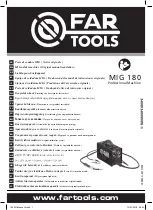
Page 6 of 22
HIW / HTF-02 series
any kind of reproduction, even in parts, is not permitted.
UK
•
Only qualified personnel must be used if the lift table is to be dismantled at the end of its service life.
•
Observe the temperature range of the equipment. In the worst case scenario, its use in locations that
are too hot or too cold can cause defects in the equipment, and can cause the operator to experience
hypothermia/frostbite or burns/irritation.
•
Possible dangers may not be recognised if there is insufficient lighting.
•
Worn or defective parts can lead to increased noise pollution and therefore to hearing impairment.
Replace worn or defective parts at an early stage.
•
Always wear appropriate protective clothing when dealing with operating materials. Never ingest
operating materials and make sure that these substances do not come into contact with the floor or parts of
the equipment where they are not intended to be. If this does occur, remove them correctly to ensure there
are no slippery surfaces. Read the safety data sheet for the respective operating material when handling
operating materials.
•
The lift table must only be used by persons that are physically and mentally capable of doing so.
Physical limits must always be observed. Each operator has individual limits, depending on the ambient
temperature, the weight of the goods to be moved, number and length of breaks and individual fitness.
Always observe your condition and take sufficient breaks. Inattention and fatigue can easily lead to errors
with potentially serious consequences.
•
Always be attentive and careful when working with the equipment. Pay attention to surroundings and
avoid dangerous situations, accidents and near-misses by handling the device carefully.
•
Improper use on a surface which is uneven or unpaved, or has too little load carrying capacity can lead
to serious accidents and injuries. Always check that the surface has sufficient carrying capacity and is
properly secured before setting up the lift table.
•
Be especially careful when lifting/lowering moving loads (e.g. liquids). Kinetic energy and vibrations that
are transferred to the load by repeated pump actuations can easily escalate and endanger the
stability/steadiness of the equipment and the load. The higher the load is raised, the stronger is its influence
on the stability of the lift table.
•
Always ensure that no parts of the body are positioned below the tabletop when dealing with the lift
table. Maintain a small safety distance when working beside the lifted tabletop. Under no circumstances
place your hand below the lift table or into the lifting mechanism. Under no circumstances attempt to loosen
a blockage or grasp an object by hand, if the lifting mechanism is blocked (e.g. by a load protruding into the
lifting mechanism, incorrect positioning/malfunction of the lifting mechanism or a defect), or if there is an
object beneath the tabletop that prevents further work with the equipment. Never reach into shearing points!
Do not use force. Secure the lifting mechanism/the tabletop against unintended lowering, for example with a
crane, then use an implement that allows removal of the blockage from a safe distance, without being
exposed to danger.
•
Ensure that the lift table is not exposed to lateral forces, especially when the tabletop is raised. The lift
table (with or without load) is far less stable in this state than when it is lowered. Instability can occur even if
the lift table is anchored to the floor, if the lift table is exposed to other forces than those for which it is
intended.
•
Always pay attention to the centre of gravity of the loaded goods. The centre of gravity may shift due to
uneven loading or unloading, threatening the stability of the lift table. The lift table may easily be damaged,
damage goods, or endanger or hurt the operator or bystanders. Always pay attention to the load centre of
gravity.
•
Never use the lift table as a seat!
•
Lower the tabletop when work with the lift table is finished or when leaving the workplace. The risk of
accidents is considerably higher when the tabletop is in the raised position.
•
Only operate the lift table using the operating unit. Never touch the scissors from the side, let alone
touch the tabletop from below. Ensure that hands and feet are not below the tabletop when lowering the lift
table.
•
Injury to the operator and damage to equipment and goods may occur if the lift table is used improperly,
manipulated or not repaired correctly, or if incorrect replacement parts are used.
Summary of Contents for HIW-02 Series
Page 292: ...5 22 HIW HTF 02 RUS...
Page 293: ...6 22 HIW HTF 02 RUS...
Page 294: ...7 22 HIW HTF 02 RUS HanseLifter...
Page 296: ...9 22 HIW HTF 02 RUS HIW HTF 02 400 16...
Page 298: ...11 22 HIW HTF 02 RUS 1 HIW 2 HTF...
Page 299: ...12 22 HIW HTF 02 RUS HIW 02 400 16A 3 3 4...
Page 300: ...13 22 HIW HTF 02 RUS 5 1 2 3 6...
Page 301: ...14 22 HIW HTF 02 RUS HIW 7 HIW HTF 8 1 9 2...
Page 302: ...15 22 HIW HTF 02 RUS...
Page 303: ...16 22 HIW HTF 02 RUS...
Page 306: ...19 22 HIW HTF 02 RUS HIW 10 HIW1 0 HIW2 0 11 HIW4 0 1 2 3 4 5 6 7 8 9 10 5 HIW...
Page 307: ...20 22 HIW HTF 02 RUS HTF 12 1 2 3 4 5 6 7 8 9 10 11 12 6...
















































